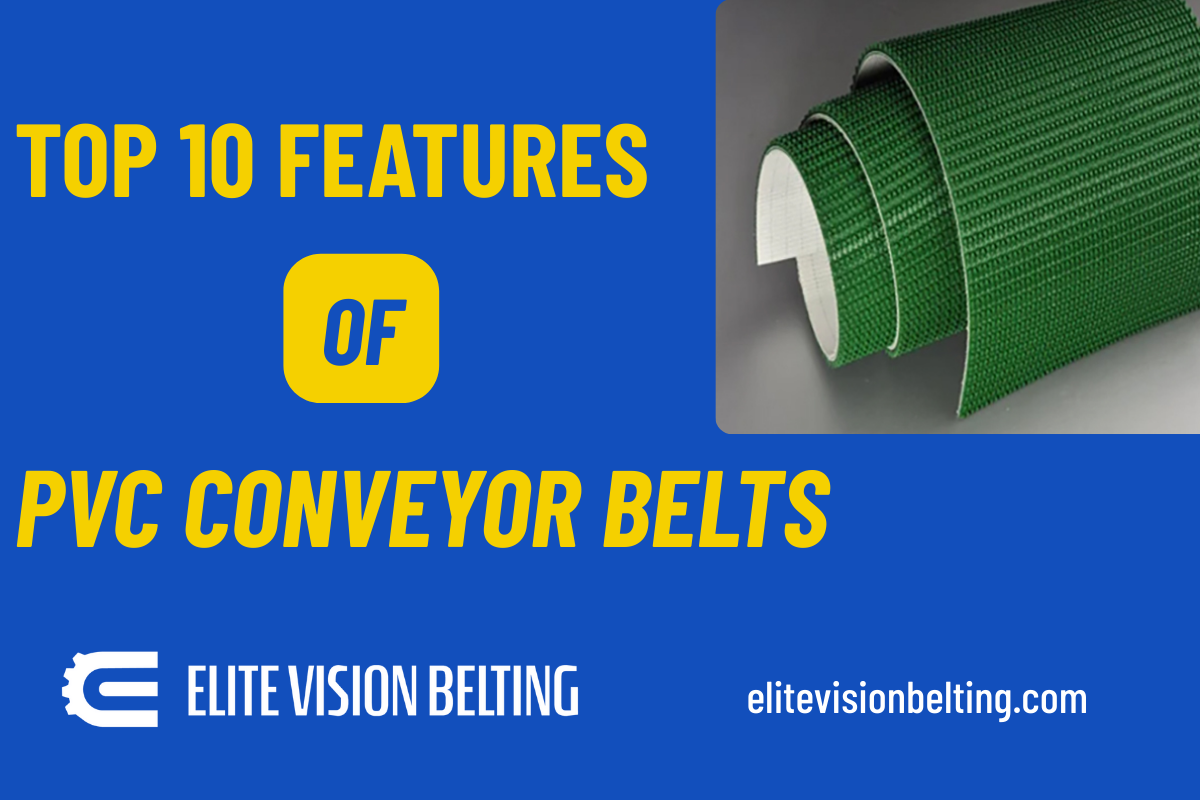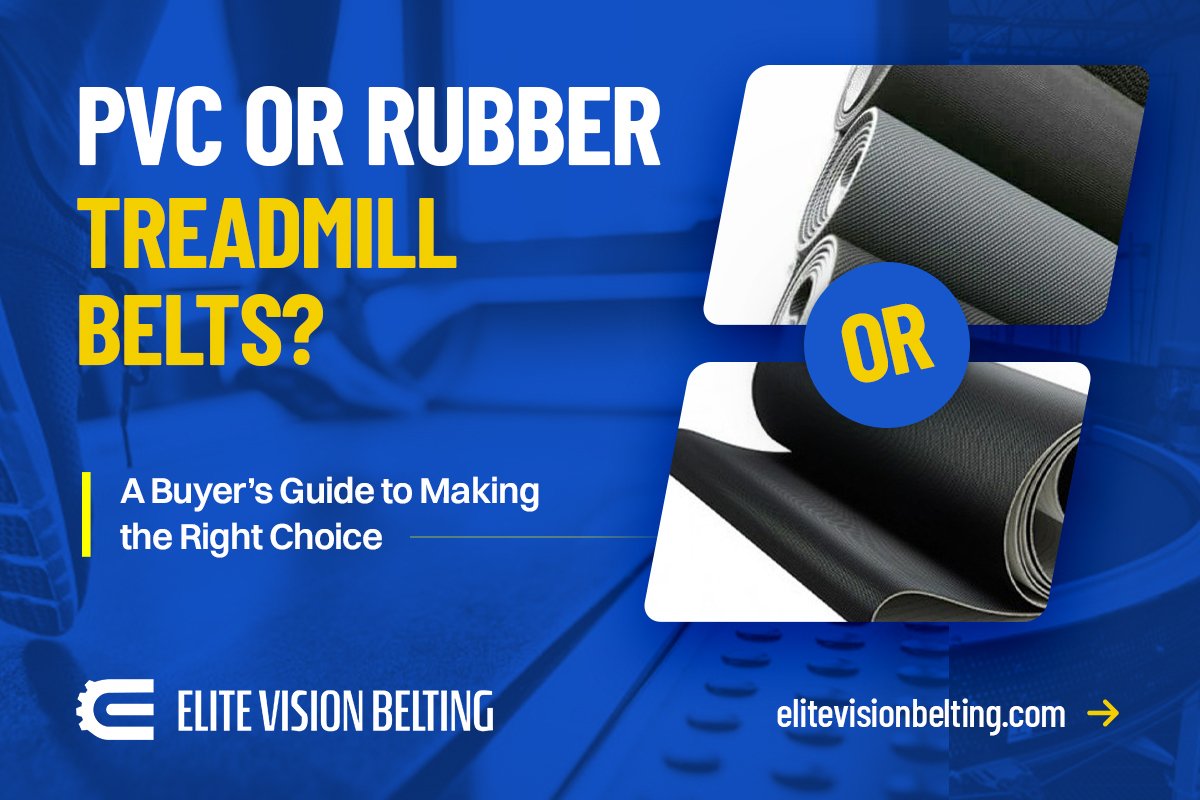Choosing the right treadmill belt is important for fitness. Treadmill belts are essential components of any machine. They impact performance and overall durability significantly.
The material directly impacts your workout experience.
This guide, curated by top treadmill conveyor belts manufacturers will help you find the best treadmill belt for you.
In this guide we’ve covered all the points and done a complete comparison of both kinds of belts, including performance, costs, best uses, and everything else.
Knowing these differences will help you choose better material for your treadmill belt. Read this guide till the end to make an informed decision, Because you’re not only investing in a belt, you’re investing in your health as well.
OVERVIEW OF MATERIALS
Treadmill belts come in different compositions. Each material offers different benefits. Knowing the pros and cons of each kind of material will help you choose better for you.
RUBBER TREADMILL BELTS
Rubber treadmill belts are a popular and time-tested option. They can be made from natural or synthetic rubber.
Natural rubber offers excellent elasticity and grip. Synthetic rubber often enhances durability and consistency. Manufacturers blend these for optimal properties. The thickness of rubber belts varies greatly.
This thickness influences their lifespan and feel. A major pro is their superior grip. This ensures a stable and secure running surface. Rubber also offers better flexibility and shock absorption.
It significantly reduces impact on your joints. This makes workouts more comfortable and safer. A quiet treadmill is another benefit.
Rubber tends to dampen motor noise effectively. They are commonly found in high-end treadmills.
Many commercial gyms prefer rubber belts too. Their rigid nature supports heavy, continuous use.
PVC TREADMILL BELTS
PVC Treadmill Belts made from Polyvinyl Chloride, are widely used. They often feature multiple layers of strength. A fabric backing provides stability to the PVC. The top layer offers the actual walking surface.
PVC belts are generally lighter than the rubber ones. This contributes to slightly lower power consumption.
They are often made at lower manufacturing costs. Cost-effectiveness is one of their significant advantages. PVC treadmill belts are more cost-effective initially. They are also known for relatively lower maintenance costs.
PVC resists moisture and certain chemicals very well. These belts are common in entry-level machines. Many home gyms feature PVC treadmill belt material.
They offer a good balance of price and function. Their lifespan is often suitable for moderate home use.
Durability Comparison
Durability is the key factor for treadmill belts. How long each material lasts is important. Both Rubber and PVC have different strengths.
|
Feature |
Rubber Treadmill Belt |
PVC Treadmill Belt |
|
Wear & Tear Resistance |
High—excellent friction tolerance and elasticity |
Moderate—resists abrasion but less elastic |
|
Heat Resistance |
Excellent—dissipates heat efficiently during high-speed use |
Moderate—can overheat under prolonged high-speed use |
|
Stretch Resistance |
Low stretch—maintains belt tension well |
Higher tendency to stretch—may require frequent adjustments |
|
Commercial Use Durability |
Very high—suitable for long hours of intense use |
Moderate—not ideal for heavy commercial usage |
|
Home Use Lifespan |
Up to 10 years |
Several years with proper care |
|
Susceptibility to Degradation |
Low—resists heat and friction well |
Higher heat and frequent use may cause earlier wear |
|
Maintenance Needs |
Low—fewer adjustments needed |
Moderate—tension may need regular checking |
|
Cost Efficiency |
Higher initial cost but longer lifespan |
More affordable, good for moderate home use |
|
Overall Durability Rating |
⭐⭐⭐⭐⭐ |
⭐⭐⭐ |
Maintenance & Care
Proper maintenance extends any treadmill belt’s life. Both Rubber & PVC have specific needs. Understanding these ensures longevity.
|
Maintenance Aspect |
Rubber Treadmill Belts |
PVC Treadmill Belts |
|
Cleaning |
Wipe down after each workout to remove sweat, dust, and debris. |
Regular wiping to prevent dirt accumulation. |
|
Lubrication |
Less frequent; rubber has natural low-friction properties. Use silicone lubricant. |
More frequent; generates more friction. Use silicone lubricant consistently. |
|
Lubricant Type |
Manufacturer-recommended silicone lubricant. |
Manufacturer-recommended silicone lubricant. |
|
Belt Alignment |
Check alignment often; rubber resists stretching well. |
Monitor tension and alignment regularly; they can stretch over time. |
|
Cracking Risk |
Low: rubber resists cracking but may slowly become brittle with age. |
Moderate; can crack due to dryness, age, or poor lubrication. |
|
Environmental Sensitivity |
Less affected by dryness or humidity. |
Can become brittle in extremely dry environments. |
|
Durability Over Time |
Ages slowly; very durable with consistent care. |
Ages gracefully but needs proper lubrication and tension checks. |
|
Maintenance Effort |
Moderate, less frequent lubrication, regular cleaning, and alignment checks. |
Slightly higher, frequent lubrication, cleaning, and close monitoring needed. |
Performance Impact
Belt’s material quality greatly influences user experience. Factors like traction & noise matter. Your workout quality depends on it.
Rubber treadmill belts offer superior traction. Their textured surface provides excellent grip. This prevents slipping during intense runs. Treadmill belt material comparison highlights this difference.
Shock absorption is another major strength. Rubber’s elasticity cushions each foot strike. This significantly reduces impact on knees and ankles. Users experience less fatigue and strain. Rubber belts are known for being quiet.
They absorb vibrations from impact effectively. This creates a smoother and more pleasant workout. Quiet treadmill belt performance is a key selling point.
Runners and athletes prefer rubber. It supports high speed and heavy pounding. The user experience is consistently premium.
PVC treadmill belts provide reliable traction. Their surface might feel firmer underfoot. Some users find it less forgiving than rubber. Shock absorption is generally less pronounced.
PVC belts can be slightly noisier. They might transmit more motor or footfall sound. This varies by treadmill design significantly. For walkers, PVC belts are perfectly adequate. They provide a stable and functional surface.
Casual runners also find PVC sufficient. Athletes often seek better outsourcing. Overall performance is good for general use.
Cost & Value
Cost is always a consideration for consumers. Initial value and long-term value differ. Each material offers distinct financial implications.
PVC treadmill belts have lower initial costs. This makes them attractive for budget-conscious buyers. The manufacturing process is less expensive. This saving passes directly to the consumer.
Replacement frequency can be slightly higher. If used heavily, a PVC belt might wear out sooner. However, replacements are also less expensive. The overall ROI for home users is good. For light to moderate use, they are cost-efficient.
PVC vs. rubber treadmill belt cost is a major differentiator. They offer an affordable entry into fitness.
Rubber treadmill belts come with a higher initial price. Their advanced materials and production cost more. However, they boast exceptional longevity. This translates to less frequent replacements.
Over many years, rubber can offer better value. The treadmill belt lifespan is often much longer. For gyms, the ROI is significant. A commercial treadmill belt of rubber holds up better. Reduced downtime means more machine availability. Less frequent maintenance also saves money.
The long-term investment often pays off. Durable treadmill belts are a wise choice.
Which One Should You Choose?
Selecting the right belt depends on your specific needs. Consider your usage patterns carefully. Different scenarios benefit from different materials.
For home gyms, a PVC treadmill belt is often suitable.
If you walk or jog moderately, PVC works well. It offers good performance without a high cost. For general family use, PVC is a practical choice. It balances budget and function effectively.
For commercial fitness centers, rubber treadmill belts are highly recommended. These facilities experience constant, heavy use.
Rubber's superior durability withstands extreme demand. They offer a better return on investment over time. Reduced maintenance is a major benefit. A reliable commercial treadmill belt is crucial.
For athletes and high-usage environments, always choose rubber. Runners need maximum shock absorption and grip. Rubber provides the cushioning essential for joint health. Its stability supports high-speed intervals.
For dedicated training, a rubber treadmill belt is unmatched. Its longevity handles daily rigorous workouts.
Conclusion
Both rubber and PVC treadmill belts have merits. Rubber treadmill belts offer durability and comfort. They excel in high-usage, intense workout settings. PVC treadmill belts are cost-effective and lighter. They are ideal for moderate home gym use. Your choice depends on frequency and intensity. Consider your budget and long-term goals carefully.
The ideal treadmill belt material enhances your fitness journey. Invest wisely for optimal performance. Contact Elite Vision Belting today for custom treadmill belts.

.png)
.png)

.jpg)
